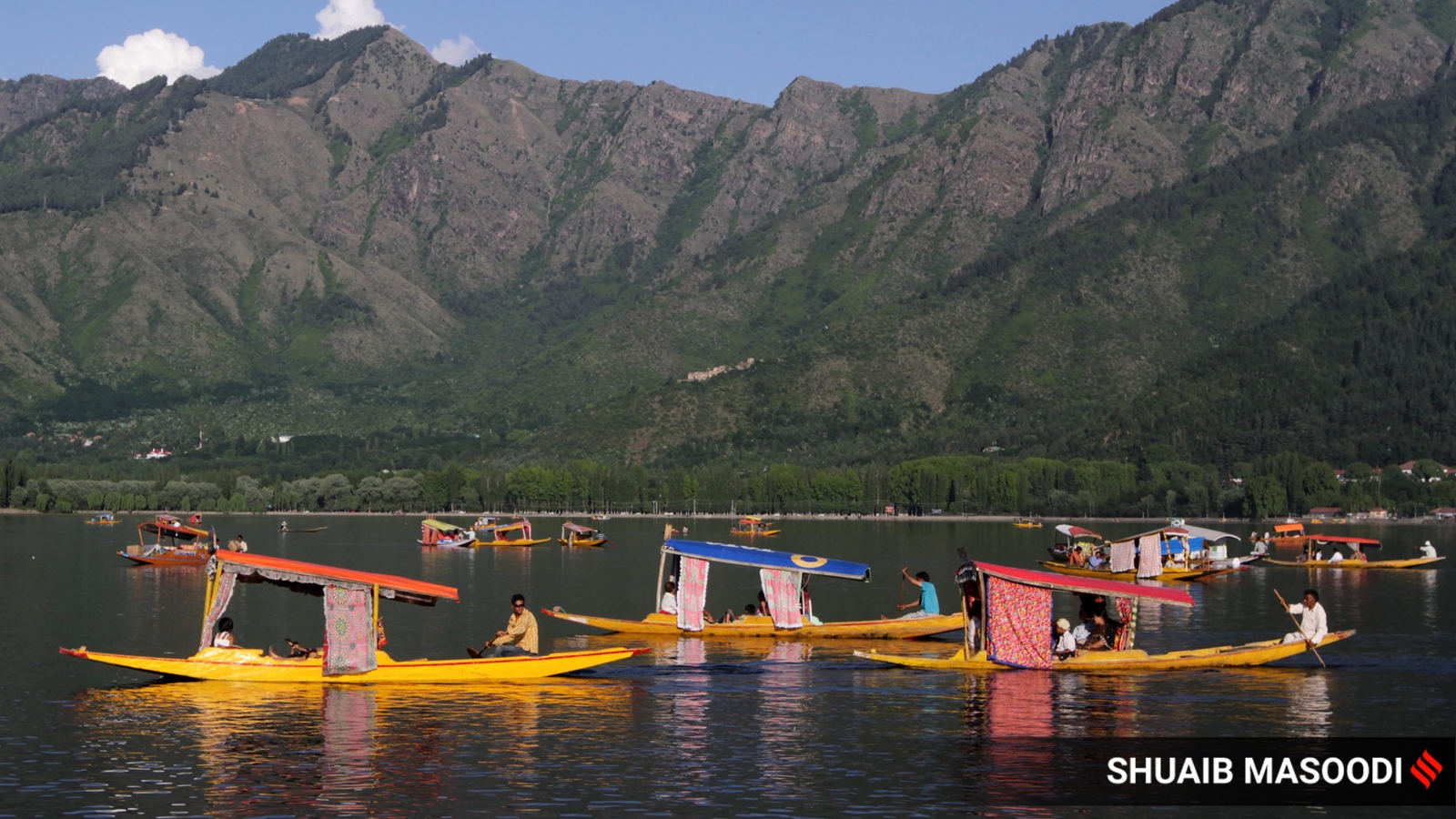
Written by Shafaat R Shah
As Kashmir wrests back its rightful position in the Indian tourism circuit with tourists reliving the Bollywood romance of the 1960s and 1970s in the meadows of Pahalgam, Gulmarg and Dal Lake’s shikaras, ecological concerns of the region have come under national spotlight again. Although Jammu & Kashmir faces far too serious existential environmental challenges like the fast-melting glaciers, Srinagar’s Dal Lake has a significant symbolic value. It’s the nucleus of Kashmir’s tourism industry and, therefore, ecological conservation should run parallel to thriving tourism.
The National Green Tribunal’s recent intervention in the matter has raised hopes of course correction and resumption of conservation efforts. The Tribunal has taken suo motu cognisance of the deteriorating condition of Dal Lake due to municipal sewage and other pollutants. In an order in August, the NGT made certain observations after examining a report of the J&K Pollution Control Committee (J&K PCC). The NGT has observed that the Dal Lake and its two channels Nayadyar and Jogilankar are almost anaerobic with a high organic load going up to 23.5 mg/1. The Sewage Treatment Plants (STPs) do not comply with the prescribed effluent norms. The STP at the Brari Nambal Lagoon is not properly designed and has operational flaws.
The J&K Pollution Control Committee has been asked to give performance data of all six STPs, which have a combined capacity of 53.8 MLD (million litres per day). On August 5, the Tribunal sought their reports. The report submitted by the J&K Pollution Control Committee depicts a grim picture of the lake’s ecological status. The J&K PCC has said there is unabated flow of untreated domestic water into the Lake. The Lake has high levels of BOD (Biological Oxygen Demand), total coliform and faecal coliform. Untreated sewage is flowing into Dal Lake from areas like Telbal and Lalbazar.
Wastewater quality analysis reports of the STPs indicate that the treated water’s quality for all analysed parameters does not fall within the prescribed limits and partially treated water seems to be entering Dal Lake. The results of key indicative water quality parameters particularly depict inadequate treatment capability of the Habak and Brari Nambal STPs.
The NGT had asked the administration to enforce the Ministry of Environment and Forest’s standards. None of the STPs around Dal Lake meet such standards completely.
Besides, there are about 910 houseboats in the Dal and Nigeen lakes and their water often gets discharged into Dal Lake without any treatment.
In the wake of NGT’s observations, the way ahead lies in data analysis to compare the present water quality of the lake to that before the installation of these STPs. This comparative data analysis is more important now as the latest J&K PCC report reveals that STPs don’t comply with norms.
Experts had suggested reorienting the Dal Conservation Plan as a scientific-ecological effort, rather than an engineering project of constructing the STPs. We have inadvertently incentivised polluting the lake by connecting all the sewerage of the catchment with non-compliant STPs, not factoring in the fact that about 80 per cent of households have enough land to construct septic/soakage pits. Why would a household construct a septic/soakage pit for its liquid waste when the government brings in a sewer right to its doorstep to channel the waste to the lake?
The NGT has constituted a Joint Committee comprising senior officers from the Ministry of Environment, Forests & Climate Change (MoEFCC), Central Pollution Control Board, J&K PCC and J&K Lake Conservation and Management Authority. Srinagar’s District Magistrate will act as the coordinating agency.
Here are some suggestions:
One, a comparative data analysis of the water quality of the lake before and after the commissioning of the STPs. This will give an idea of the degree of success achieved so far.
Two, the sewage load on the lake is more than its dilution capacity. Make it mandatory for households in the catchment (who have required minimal land) to construct septic/soakage pits for their liquid/faecal waste. This will substantially reduce the sewage load on the lake.
Three, reduce silt load on the lake by arresting soil erosion in the catchment.
Four, no linking of the sewerage system with Dal Lake. Instead, explore connecting any left-out areas with the Jhelum river, like Brari Nambal STP which takes sewage from Dal areas and empties into Jhelum. A running water body has far more dilution capacity than a lake.
Non-compliant operation of the STPs has been condoned for too long. It’s time to make the required amends in terms of technology upgrade and operational efficiency.
The writer works at the J&K Pollution Control Committee



